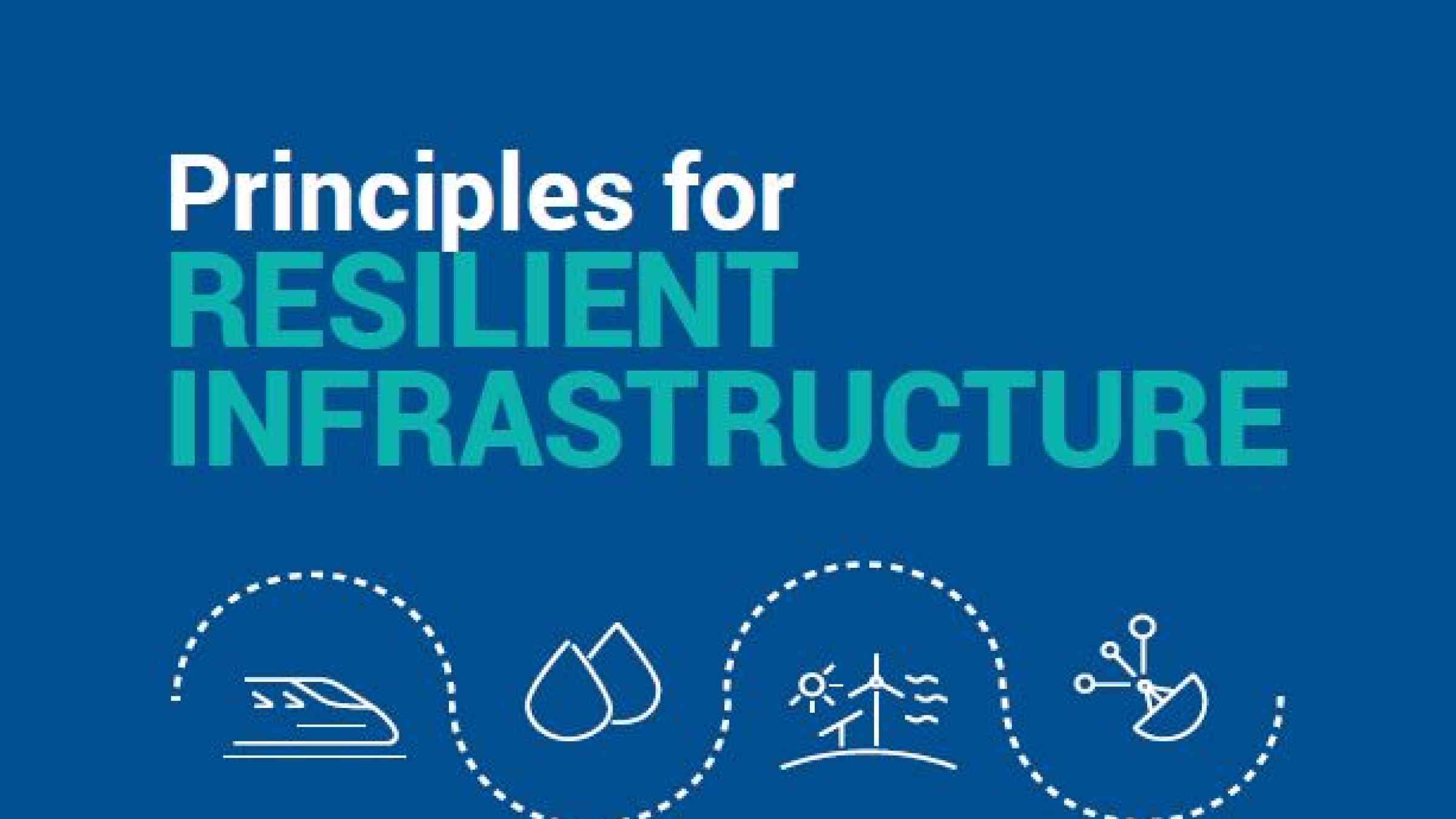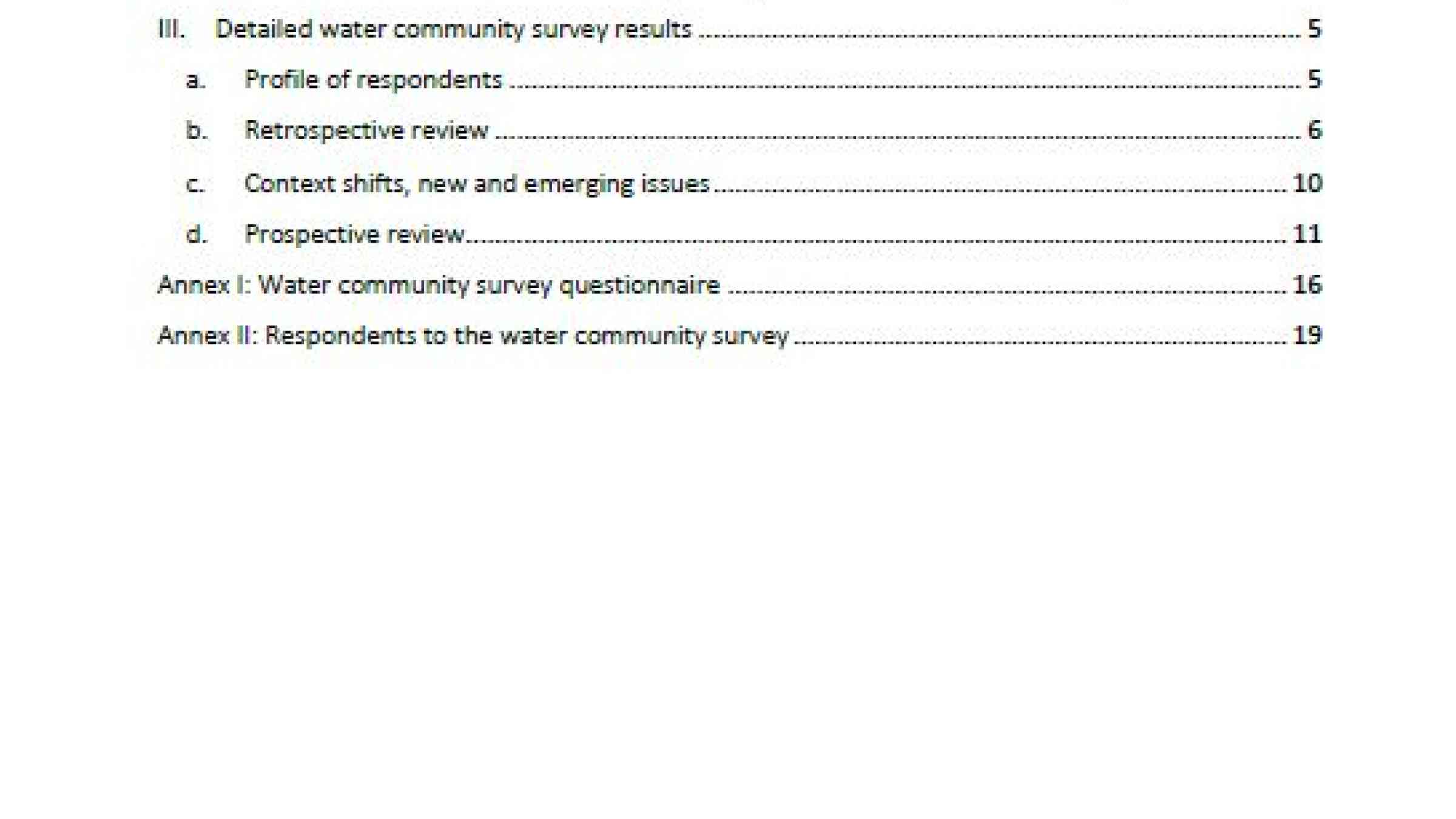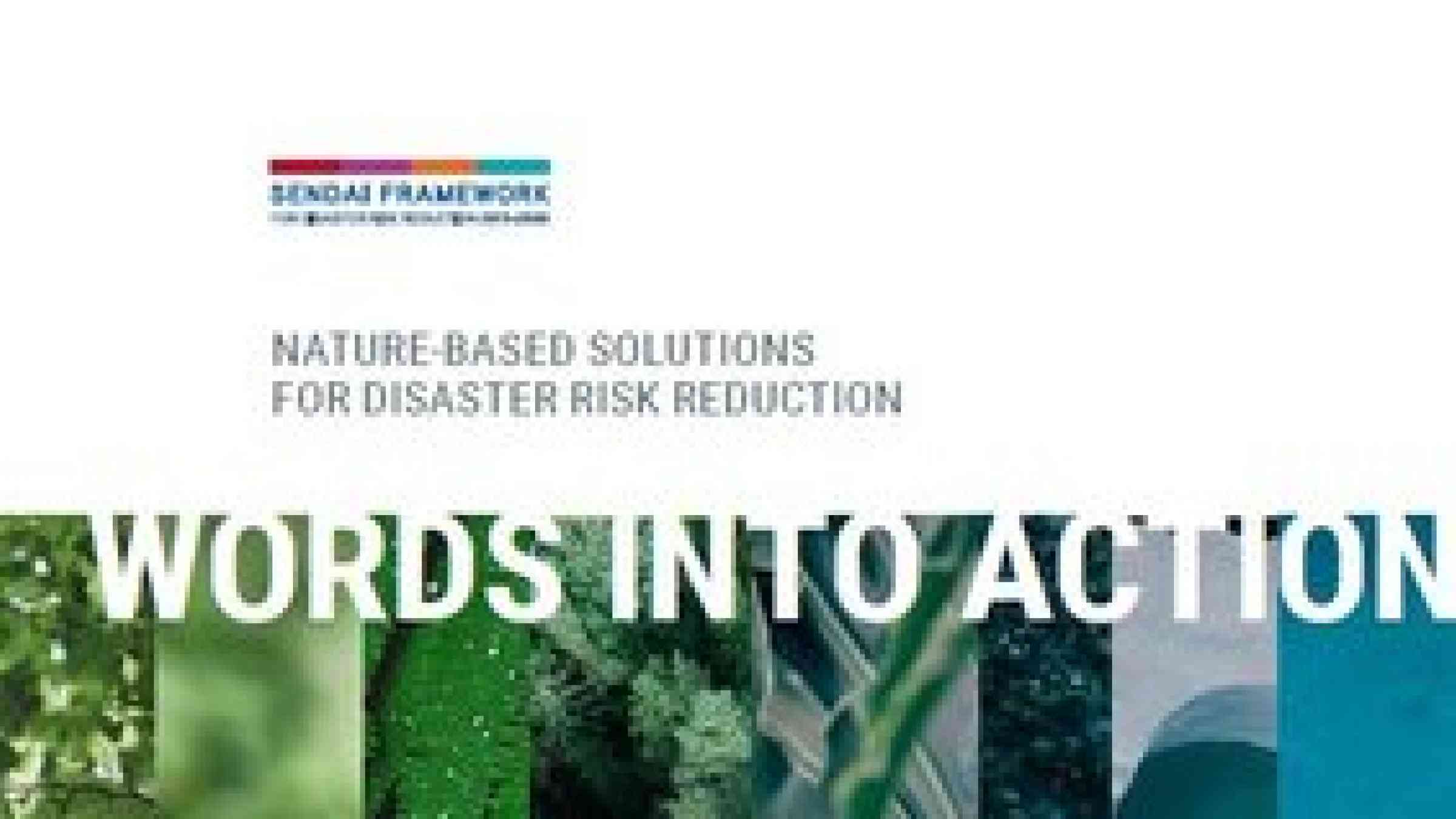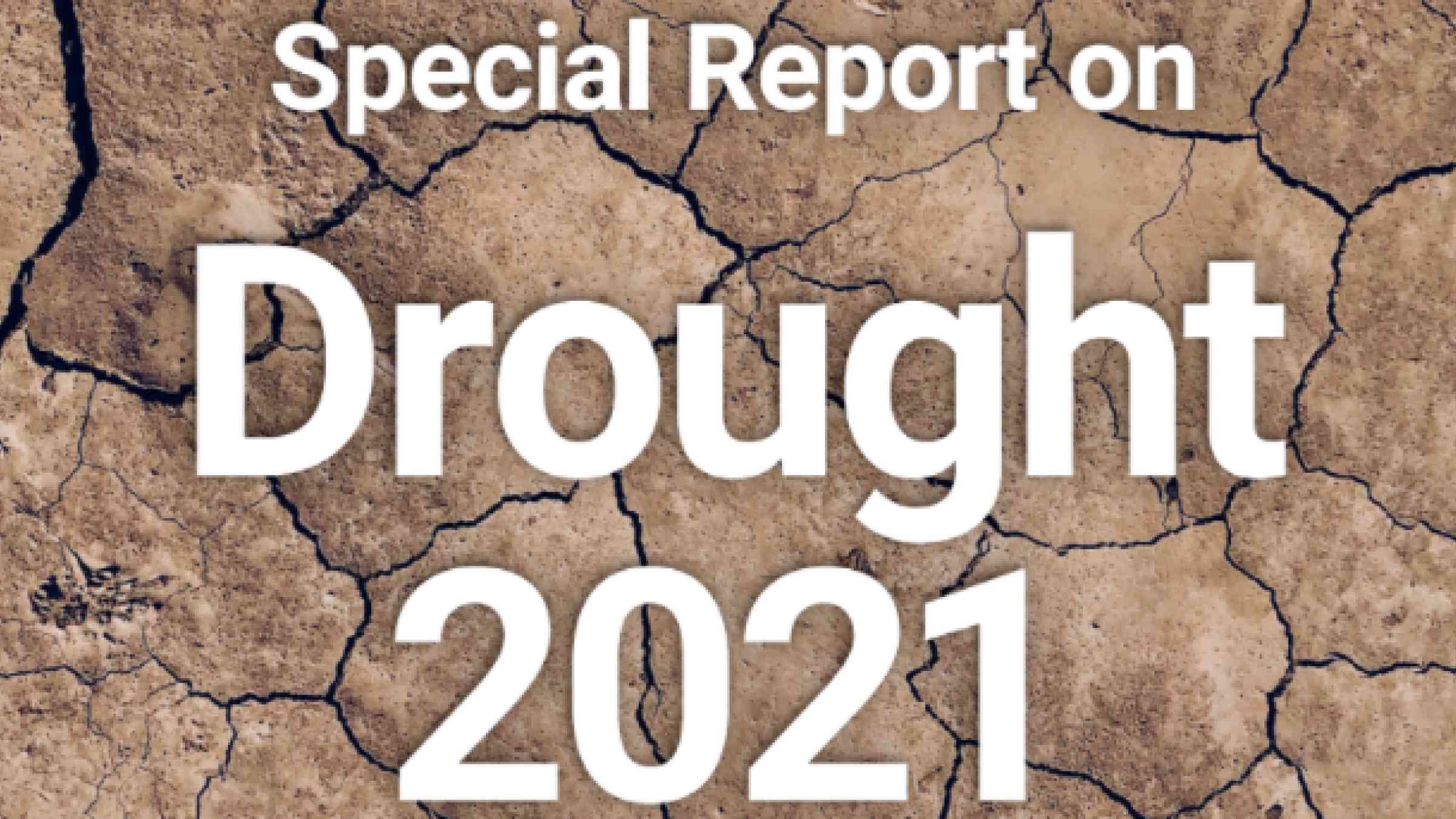Water risks and resilience
As climate change is projected to result in more intense droughts and floods, the protection and sustainable use of water resources is fundamental to deal with the climate and environmental emergency and build resilience. Comprehensive risk management, integrated policy making and unlocking finance mechanisms are key for achieving multiple benefits and enabling better water outcomes, including through nature-based solutions.
Facts and figures
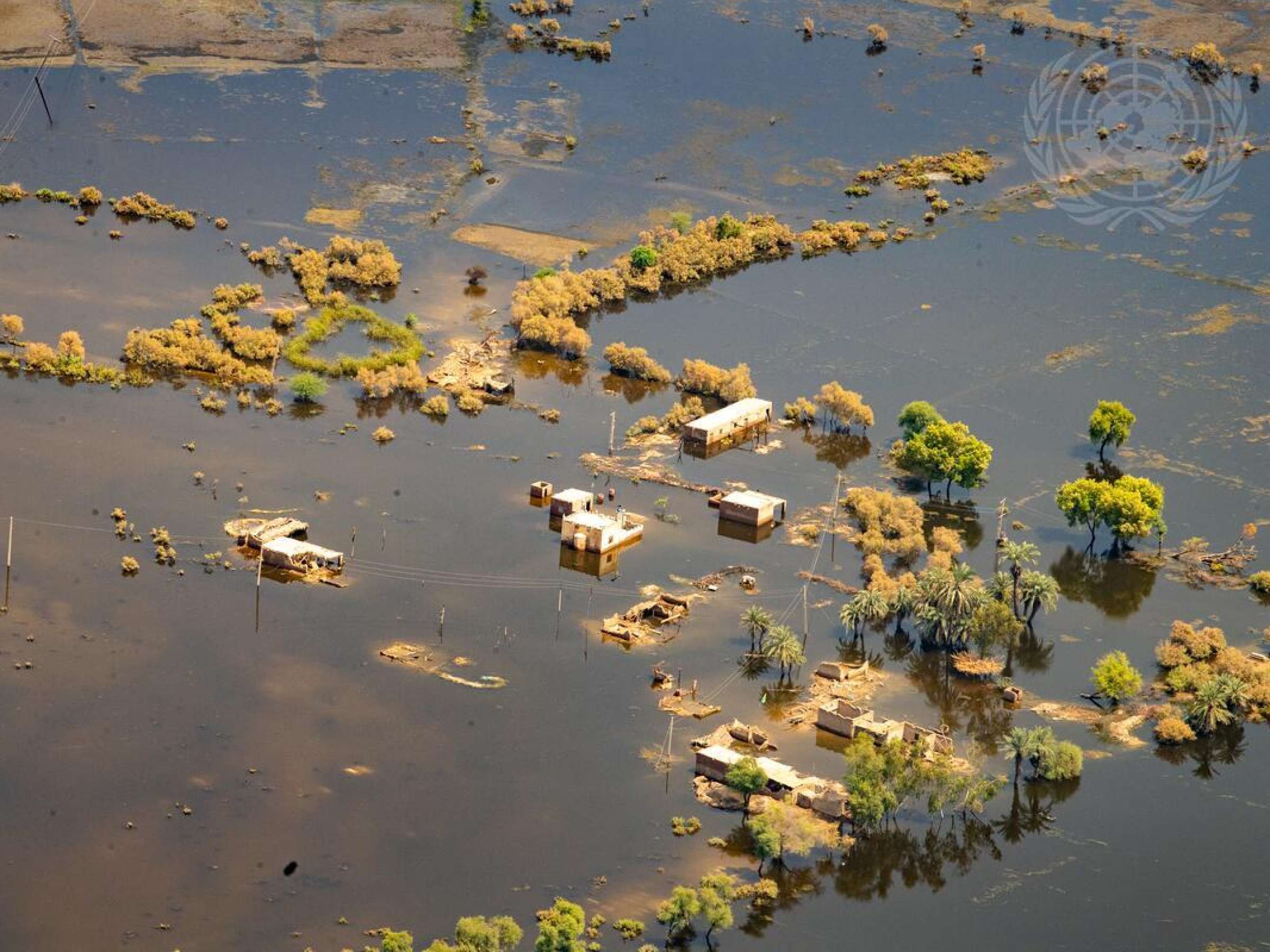
1.4 Billion affected
At least 1.4 billion people have been affected by droughts and 1.6 billion by floods between 2000 and 2019 (World Bank, 2021).

83% Loss
Freshwater biodiversity and species populations have been lost at a rate of 83% since the 1970s, faster than any other ecosystem being monitored (WWF, 2022)

Doubling of deaths
Water related disaster deaths have more than doubled in the last 10 years and nearly 95% of infrastructure loss and damage reported between 2010 to 2019 were due to water-related disasters (Sendai Framework Monitor)

US$ 115B in losses
In the last 50 years, floods led to economic losses of US$ 115 billion, while droughts led to the largest human losses causing 650000 deaths. (UNCCD, 2022)
UNDRR commitments on water
- Leveraging the Principles for Resilient Infrastructure and UNDRR's Stress-testing tool to advance water infrastructure resiliency
- Better data for water-related disasters
Strengthening and increasing access to early warning systems
Multi-hazard early warning systems (MHEWS) and water-related risk data and information provide an integrated system for anticipating predictable stresses and shocks as well as for taking early and anticipatory action. Integrating water data into early warning and early action responds to Sendai Framework priority 1 “understanding disaster risk” as well as Target G by applying a cross-sectoral approach.
WMO and UNDRR are leading the Early Warnings For All Initiative to ensure that everyone on earth is covered by early warning systems by 2027.
Promoting integrated risk-informed policymaking and water governance
A comprehensive risk management approach helps to reconcile climate change adaptation and disaster risk reduction by systematically addressing climate change in light of water-related hazards. By aligning national adaptation goals and disaster risk strategies, the resilience of societies can be increased.
Integrated water resources management, supported by comprehensive risk management and increased convergence between relevant intergovernmental processes and agendas enables critical cross-sectoral linkages. Through integrated and risk-informed water governance, multiple objectives can be achieved, including increased resilience, disaster risk reduction, freshwater biodiversity conservation and environmental protection, climate change mitigation and adaptation, human health and wellbeing, etc.
Nature-based solutions (NbS) or hybrid approaches (those combining NbS with grey infrastructure solutions) provide an important entry-point for addressing water-related disaster risks in a cost-effective and efficient manner, while providing multiple benefits. For instance, an estimated US$ 625 million in flood damages during hurricane Sandy could have been avoided, if wetlands were deployed for disaster risk reduction.
Supporting risk-informed and sustainable investments
Integration of risk considerations into the second half of the Water Action Decade also requires financing risk-informed sustainable development and integrated water resources management. In this regard, policymakers need to make private companies more accountable for their management of water resources and the measures they take to reduce water-related risks. This requires changing disclosure rules for large companies to ensure sustainability reporting that covers exposure and vulnerability to water risks. In turn, this will enable investors to integrate this information in investment decisions.
Environmental Economic Accounting can unlock investments for water-related climate and environmental resilience-building, particularly in the growing areas of climate finance and nature-based solutions.
Financing is also critical for the development of resilient water infrastructure.
Water infrastructure resilience
There is an urgent need to enhance infrastructure resilience, including through nature-based solutions that build adaptive capacity while reducing risk. The UNDRR Principles for Resilient Infrastructure provide guidelines and criteria to help stakeholders (governments, private sector, regulators, and communities) better understand what infrastructure resilience entails, and to ensure that resilience is embedded into infrastructure decisions and investments. By adopting these principles, public and private investors can enhance the resilience of water infrastructure systems and protect their investment, while reducing costs over time.
Leveraging the Midterm Review of the Sendai Framework for Disaster Risk Reduction and the Water Action Decade
The coinciding midterm reviews of the Water Action Decade and the Sendai Framework in 2023 offer critical opportunities the world must seize to identify adjustments that promote risk-informed regenerative development while sustainably managing water resources and associated ecosystems. To this end, the UN 2023 Water Conference should consider how its deliberations prevent and reduce risks before they manifest as disasters, and how decisions can avoid the creation and propagation of risks across systems. The conference should further consider how its outcomes can inform the High-level Meeting of the General Assembly that will conclude the Midterm Review of the Sendai Framework on 18‒19 May 2023 and the calls-to-action to be featured in the Political Declaration of the Midterm Review.

